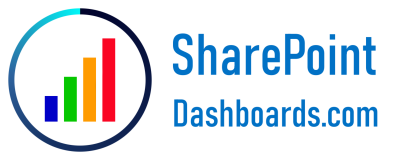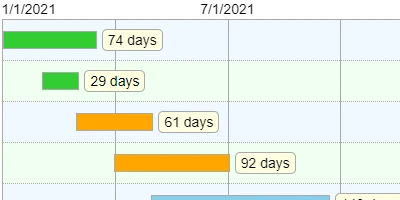Understanding SharePoint Dashboards
SharePoint Dashboards are revolutionizing the way organizations utilize SharePoint list and column formatting by removing the necessity for complex code writing. Traditionally, leveraging the full potential of SharePoint through JSON formatting required a significant understanding of coding. However, SharePointDashboards.com now offers a user-friendly, code-free approach to achieve the same results. This innovative solution allows users to customize their dashboards with ease, providing access to a range of visually appealing templates that can be tailored to specific project needs.
Seamless Charting and Visual Status Indicators
A core benefit of using SharePoint Dashboards is its ability to enhance charting and visual status indicators. Visual tools are crucial in project and employee management, offering quick insights into project statuses, upcoming deadlines, and resource allocation. The templates provided by SharePoint Dashboards allow seamless integration of such indicators, ensuring that teams can easily gauge project trajectories and make data-driven decisions.
Templates can be customized to reflect different parameters, with options to adjust colors, borders, font styles, widths, and heights. The flexibility offered makes it easy to match a company's branding or focus on specific data categories that are most relevant. Visual status indicators save time and effort, ensuring stakeholders quickly understand comprehensive data without the need for in-depth analysis.
Enhancing Project and Employee Management
Incorporating SharePoint Dashboards into project management can significantly improve efficiency. For project managers overseeing multiple projects, the ability to visualize progress through up-to-date dashboards can streamline operations and ensure timely delivery of projects.
Key elements like task completion rates, bottlenecks, resource utilization, and performance metrics can be represented visually. This visualization allows managers to quickly identify issues that may require attention, thus reducing the risk of project overruns. Similarly, in employee management, dashboards can track employee performance, workload distribution, and productivity levels, ensuring that management makes informed decisions to support team members effectively.
Streamlining Tracking and Reporting
Tracking progress and generating reports are critical elements in any organization, and SharePoint Dashboards provide a comprehensive solution for these needs. By utilizing templates, organizations can standardize reporting formats, making it easier to compare data across different periods or projects.
The ability to customize templates means reports can be tailored to highlight specific metrics, such as sales growth, operational efficiency, or customer satisfaction rates. These reports offer key insights into organizational performance, assisting senior management in strategy formulation and decision-making.
Setting Up Dashboards in SharePoint
Setting up a SharePoint Dashboard is a simple process. SharePointDashboards.com offers templates that are easily integrated into SharePoint by copying and pasting. This simplicity eliminates the need for complex programming, reducing the initial setup time significantly.
Users can start by selecting from 21 free templates available to new users. For more extensive options and functionality, subscriptions offer access to hundreds of templates, enabling users to browse a wide array and select the ones that meet business needs. The simplicity of setup, combined with the extensive customization options, ensures that the dashboards can be tailored to any organizational requirement.
The Role of SharePoint JSON Formatting
SharePoint JSON formatting is a powerful tool that allows users to dictate how lists and data are displayed within SharePoint. The format uses JSON code to customize the appearance of lists, enhancing the overall user experience. SharePoint Dashboards simplify this process by providing pre-configured templates that apply JSON formatting automatically.
Users don't need to engage with JSON directly; instead, they select a template that best suits their needs, and apply it to a SharePoint list view. This method ensures accurate and aesthetically pleasing list formats, bolsters user engagement, and allows for easy updates if business needs change.
Use Case Scenarios for SharePoint Dashboards
The flexibility and functionality of SharePoint Dashboards make them suitable for various scenarios within an organization:
- Team Collaboration: Use dashboards to track team projects, ensuring all members are aligned and updated with real-time data visualizations.
- Resource Management: Visual status indicators can help manage resources effectively, highlighting shortages or excesses that need to be addressed.
- Sales Tracking: Sales teams can benefit from dashboards that monitor sales data, customer interactions, and progress toward targets.
- Performance Reviews: HR departments can utilize dashboards to monitor employee performance metrics, streamlining the review process and identifying areas for improvement.
- Project Milestones: Project managers can set up dashboards that focus on key project milestones, ensuring that deadlines are met and any issues are resolved promptly.
SharePoint Dashboards provide organizations with the necessary tools to visualize complex data sets in a manner that is both informative and actionable. By leveraging this innovative service, companies can enhance productivity, improve decision-making, and ultimately, drive business success.
For further exploration or to start utilizing SharePoint Dashboards, visit
SharePoint Dashboards to transform your data into strategic insights effortlessly.






